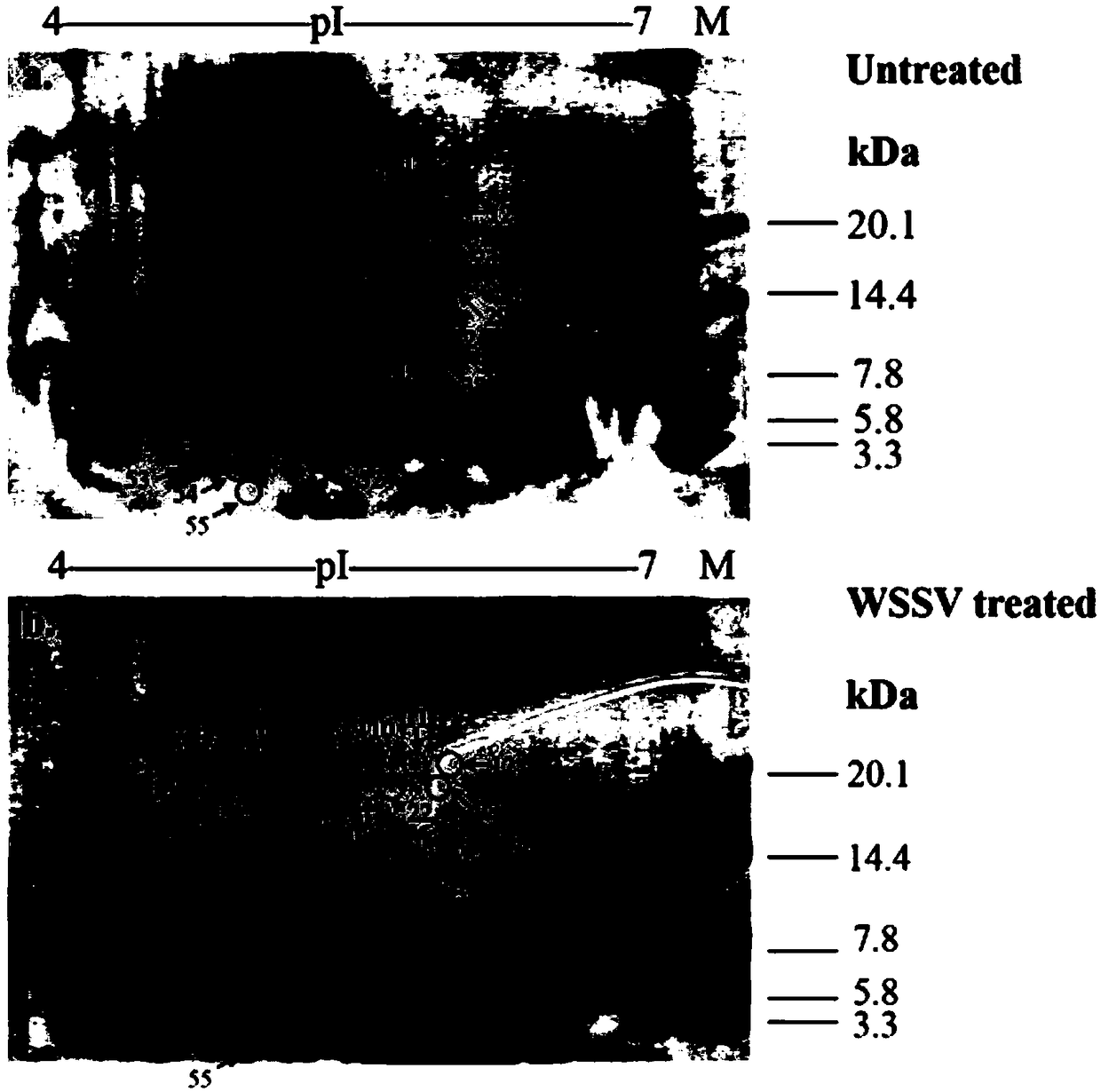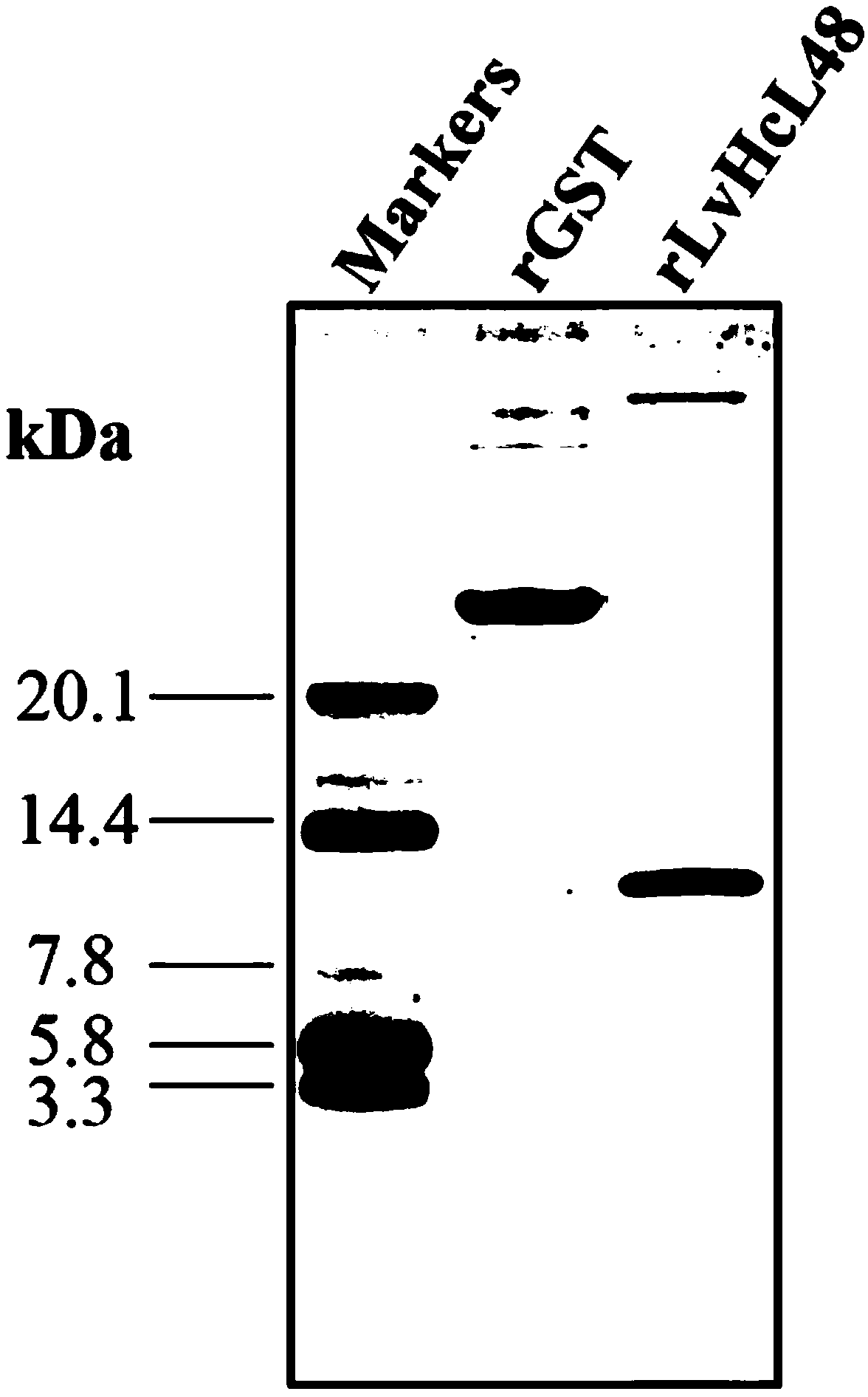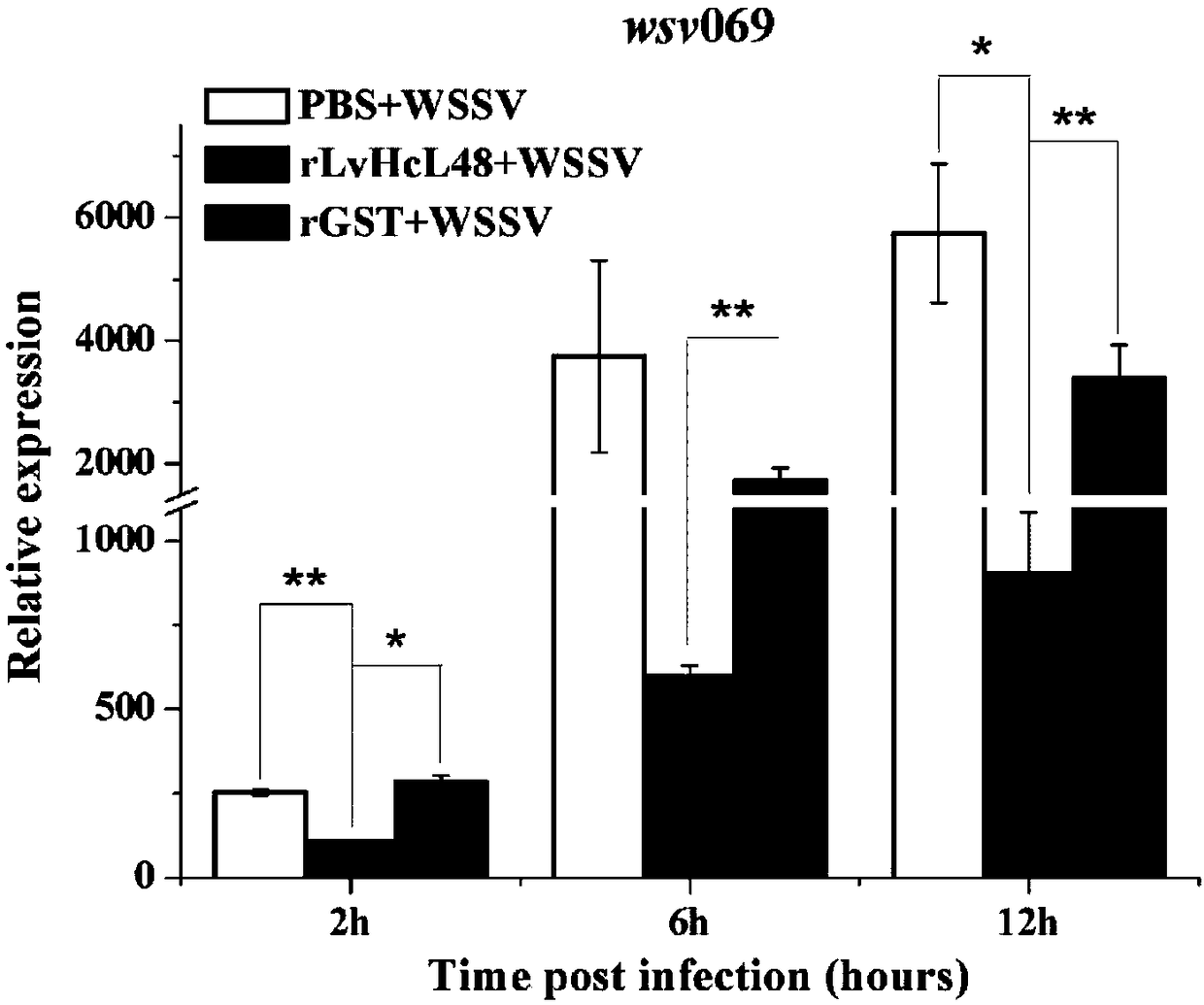Anti-WSSV (White Spot Syndrome Virus) peptide LvHcL48 derived from litopenaeus vannamei hemocyanin and application thereof
A technology of hemocyanin and lvhcl48, which is applied in the field of short peptides and their coding genes for inhibiting white spot syndrome virus
- Summary
- Abstract
- Description
- Claims
- Application Information
AI Technical Summary
Problems solved by technology
Method used
Image
Examples
Embodiment 1
[0028] Example 1: Isolation and identification of shrimp hemocyanin degradation peptides related to inhibition of WSSV
[0029] (1) Dilute WSSV to 1.4×10 2 copy / μl, each shrimp was injected with 100 μl, that is, 10 4 copy / shrimp, the hemolymph of the prawns was extracted 2 hours after the injection. Use 75% alcohol cotton balls to wipe the rear edge of the prawn head breastplate, draw hemolymph from the heart of the prawns with a disposable syringe and mix it with anticoagulant (1:1). Centrifuge at 800g for 10min at 4°C to remove blood cells and take the supernatant. Ultracentrifuge at 32,000 rpm for 10 h at 4°C to remove most of the hemocyanin, and take the supernatant. Pre-cool acetone to precipitate, remove insoluble protein, dissolve with loading buffer, and store at -20°C for later use.
[0030] (2) The protein concentration was determined by BCA method. Add 20 μl of BSA Protein Standard of different concentrations, samples to be tested and blank control to each well...
Embodiment 2
[0035] Example 2: Obtaining the molecular characteristics of the degradation peptide of shrimp hemocyanin related to the inhibition of WSSV
[0036] (1) According to the results of mass spectrometry, the protein spots that were identified as hemocyanin and had significant differences were recovered by gel, using the Shanghai Sangon PAGE Protein Micro-Glue Recovery Kit.
[0037] (2) Send the gel-recovered protein to Shanghai Zhongke New Life for Edman N-terminal sequencing.
[0038] (3) Send the protein sample to Shenzhen Micronafe Biotechnology Co., Ltd. for C-terminal sequencing.
[0039] (5) According to the results of Edman N-terminal sequencing and C-terminal sequencing, deduce the amino acid sequence of the hemocyanin degradation peptide. Obtain the amino acid sequence composition of the degraded peptide.
[0040]The amino acid composition of LvHcL48 is: Arg-Phe-Leu-Ile-Pro-Lys-Gly-Asn-Glu-Gln-Gly-Leu-Glu-Phe-Asp-Leu-Val-Val-Ala-Val-Thr-Asp- Gly-Ala-Ala-Asp-Ala-Ala-Val...
Embodiment 3
[0041] Example 3: Gene cloning and prokaryotic expression of the shrimp hemocyanin degradation peptide related to the inhibition of WSSV
[0042] (1)根据多肽的N端和C端序列,定位至血蓝蛋白氨基酸序列中,结合核苷酸序列:CGATTCCTCATCCCCAAGGGTAATGAACAGGGTCTGGAGTTCGACCTTGTTGTTGCCGTGACTGATGGCGCAGCCGACGCAGCAGTGGATGGCCTCCACGAAAACACCGAATTCAATCATTATGGTTCCCATGGCAAGTACCCTGACAATCGCCCACATGGCTACCCTCTGGATCGCAGGGTTCCCGATGAACGTGTATTCGAAGATCTTCCCAACTTCGGCCACATCCGAGTTAAG,设计PCR引物,用肝胰腺的cDNA为模板进行PCR扩增。 The target band was recovered and purified using an agarose gel DNA recovery kit (Shanghai Sangong). For the method, refer to the kit instruction manual, and the concentration was measured for the next experiment.
[0043] (2) The purified PCR product and pGEX-6p-1 were digested with restriction endonucleases, the concentration was measured after recovery from the gel, and ligated with T4 ligase overnight at 16°C. The ligation product was transformed into Escherichia coli strain Rosetta, and cultured upside down on LB solid medium con...
PUM
 Login to View More
Login to View More Abstract
Description
Claims
Application Information
 Login to View More
Login to View More - R&D
- Intellectual Property
- Life Sciences
- Materials
- Tech Scout
- Unparalleled Data Quality
- Higher Quality Content
- 60% Fewer Hallucinations
Browse by: Latest US Patents, China's latest patents, Technical Efficacy Thesaurus, Application Domain, Technology Topic, Popular Technical Reports.
© 2025 PatSnap. All rights reserved.Legal|Privacy policy|Modern Slavery Act Transparency Statement|Sitemap|About US| Contact US: help@patsnap.com



